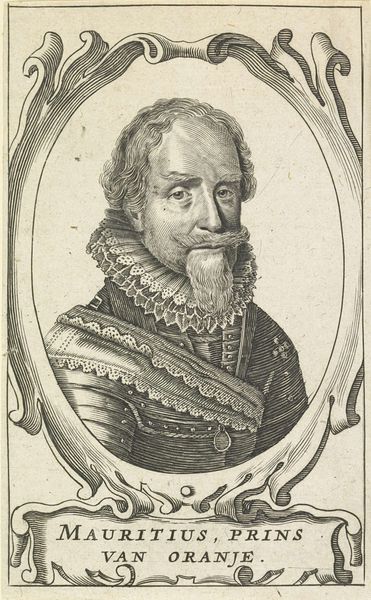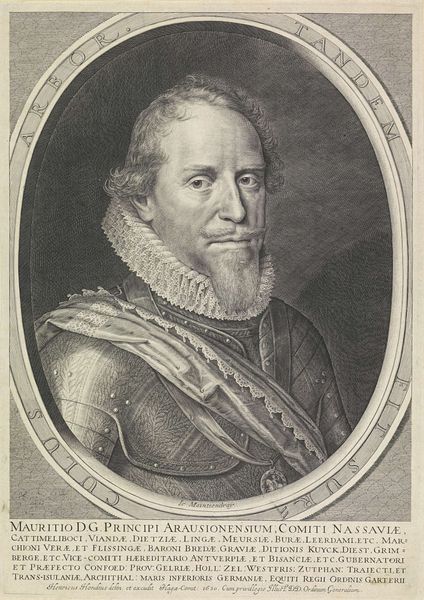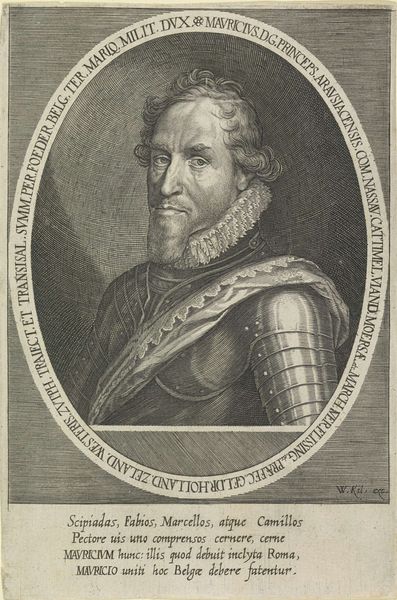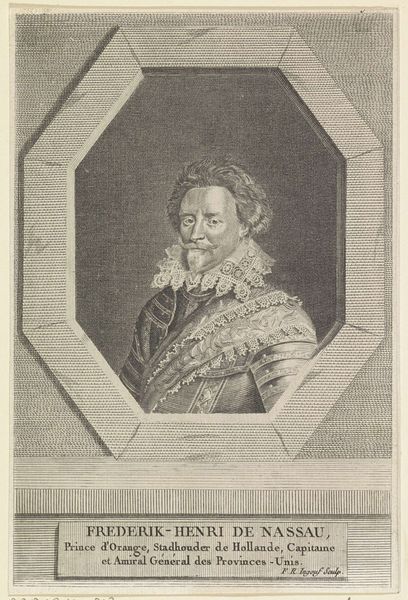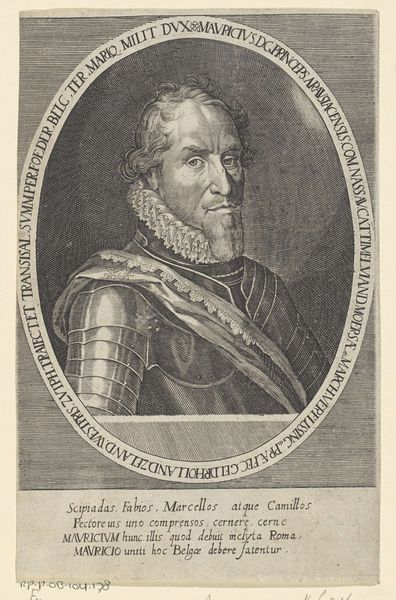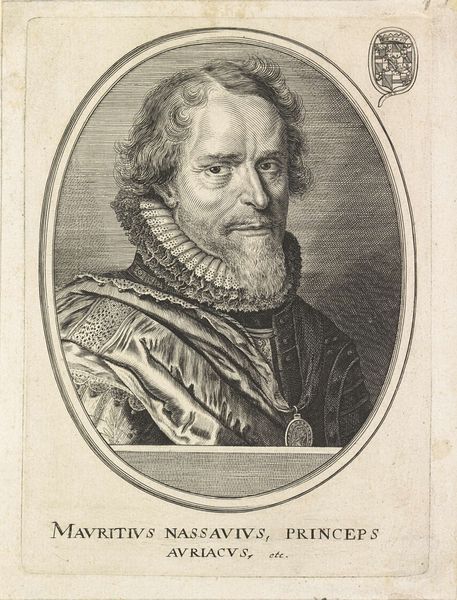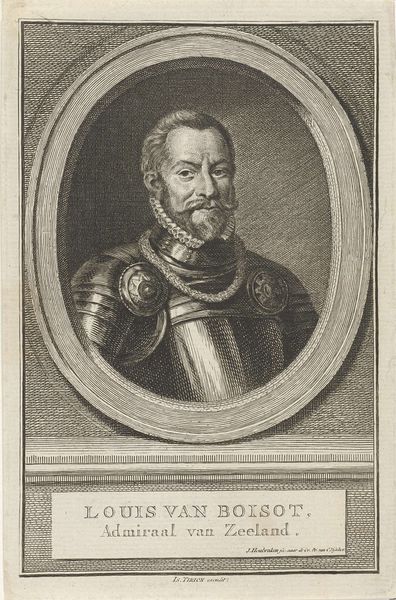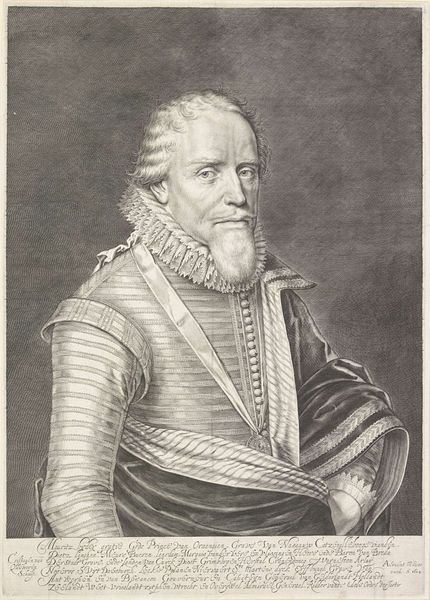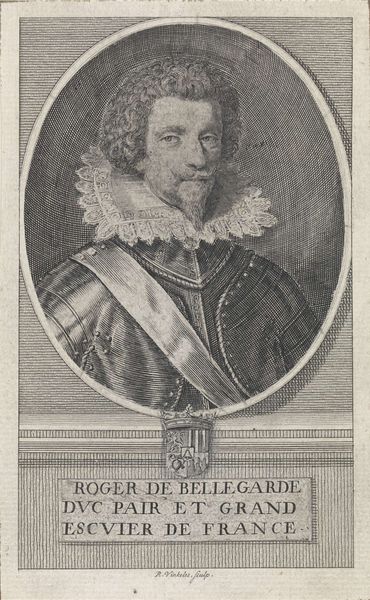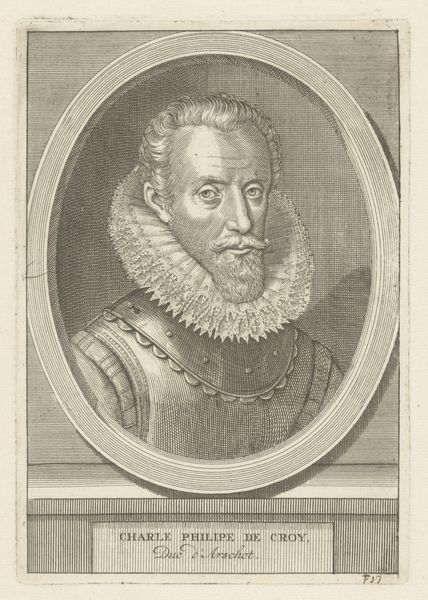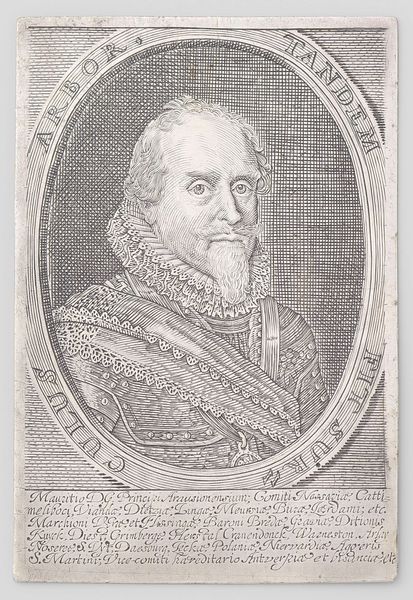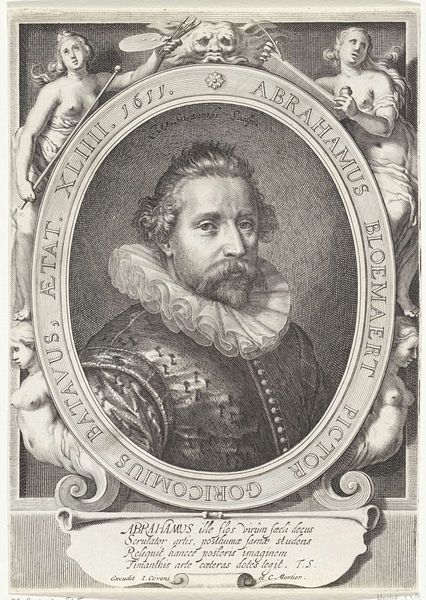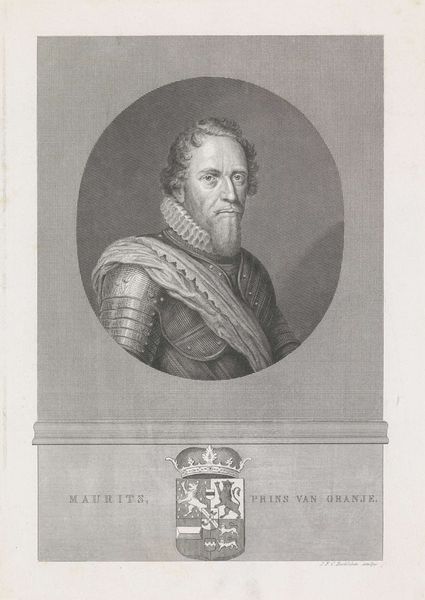
drawing, print, engraving
#
portrait
#
drawing
#
medieval
#
dutch-golden-age
# print
#
charcoal drawing
#
geometric
#
history-painting
#
engraving
Dimensions: height 215 mm, width 145 mm
Copyright: Rijks Museum: Open Domain
Curator: This engraving, dating roughly from 1840 to 1884, is titled "Portret van Johan VII, graaf van Nassau-Siegen." The artist is Willem Steelink. Editor: Immediately striking. The stark contrast of light and shadow creates such a compelling illusion of depth, especially around his face and the metallic surfaces. Curator: Yes, Steelink captures a striking realism within this piece, but what draws my attention is the historical context of portraits like these. Johan VII's image was crafted and disseminated within a framework of power. Note how this isn’t just a likeness, but a representation of status—his attire, his calm expression, the family crest—all designed to assert his lineage and authority. Editor: Absolutely. Formally, that lower section featuring his name and heraldry anchors the composition, providing a base from which the eye ascends towards the main subject. The artist also creates tension using that rigid geometrical base contrasting with the curves of his body above. Curator: Precisely. Think of the turbulent period in which Johan VII lived, a time of profound socio-political shifts with emerging ideas of individualism against traditions of royal governance. Steelink created this image to negotiate these shifting sands. This depiction served as a visual emblem of stability amidst a world in flux. The question is how effective that symbolism truly was at countering radical politics. Editor: One cannot overlook the textural details. Consider the contrast between the smooth planes of the armor, the delicate lace collar, and the rendering of the skin itself. The light isn't just illumination; it models the forms. Curator: But is this attention to form also reflective of a romanticized vision of the past? I believe the level of detail may inadvertently celebrate hierarchical systems that relied upon exploitation and control. The work then runs the risk of unintentionally legitimizing unequal dynamics that persist today. Editor: A compelling point, certainly. By exploring these aesthetic details, we discover a deeper understanding of both artistic technique and broader narratives about authority, and of our relationship to that concept as well. Curator: Indeed. It forces us to reckon with how we memorialize the past and who benefits from those narratives. Editor: Well, this work has certainly offered us ample ground to analyze and appreciate, hasn't it? Curator: I agree. And, hopefully, the complexities explored offer insights for the listener too.
Comments
No comments
Be the first to comment and join the conversation on the ultimate creative platform.
